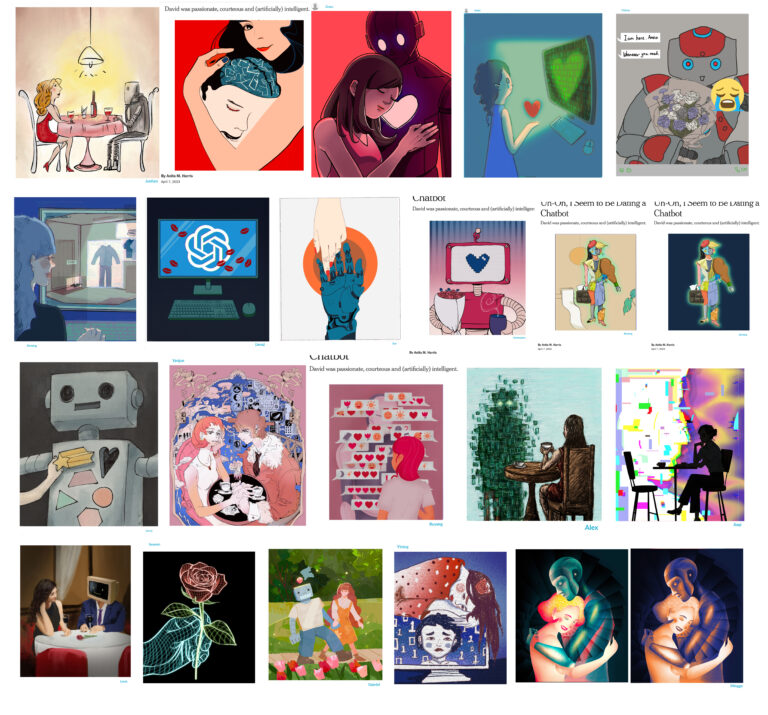
Yesterday, I returned to the Shepard Fairey Exhibit at the ICA–this time, with visitors from out of town.
We were impressed with how prolific Fairey has been, with the precision and beauty of his images, and with his complex, ironic juxtaposition of past and present. (His backgrounds include a lot of old newspaper clippings and many references to art forms of the past).
In one work, Fairey selectively uses and amplifies portions of the American dollar bill–included an eye, which I’d never noticed until Jessie pointed it out; a man carrying a briefcase of money in one hand and flowers in the otherm and a woman, probably his wife, carrying a small missile in her arms. A caption reads: “No cents.”
This time, I studied the controversial Obama “Hope” poster, which, from across a large room DOES look like a colorized version of the copyrighted Associated Press photograph on which it was based.
But on closer inspection, in this version, it becomes clear that Fairey has greatly transformed the photo, which he uses in a provocative interchange with the colors, images, slogans, stencils, newspaper clippings and other elements typical of (and original to) his work.
Black “brushstrokes” highlighting Obama’s facial features serve as a frame for those elements, which in turn, provide the color, shading and chiseled shaping of Obama’s head.
As a result, the poster becomes a figure-ground study portraying many past events, conflicts and dilemmas that brought the US to the crises with which Obama is grappling, today.
The poster’s intertwining of past and present with the Obama image bring a definite irony to the slogan “Hope.” (One of the newspaper headlines in the background reads:”Congress Blames Hoover for Having No Sense of Humor).
Donna pointed out that the portrait is yet another example of Fairey’s overriding message: how the slogans, art and icons of advertising are used to move us to obey–whether the order be “buy”, “peace”, “shoot” or “hope.”
Fairey employs the same techniques for his portraits of Martin Luther King and other political leaders, musicians, artists and even one of a Campbell’s soup can– referencing and repeating the work of Andy Warhol, whose photography-based work, like Fairey’s, used advertising’s methods to comment on and exhibit the medium’s power.
Regarding Fairey’s recent arrest for illegally postering public property: Nancy (who happens to be a judge) and I wondered what controversy would arise if his work were posted as paid-for advertising–to sell what some might view as subversive, anti-establishment or propagandist ideas.
She later commented “Fairey seeks to reframe the constitutional debate so that artistic expression/speech is favored over commercial speech/intellectual property”.
Doree questioned whether Fairey’s work is political commentary or art. I’d have to say: it’s both.
Comments welcome!
AMH
New Cambridge Observer is a publication of the Harris Communications Group of Cambridge, MA.



